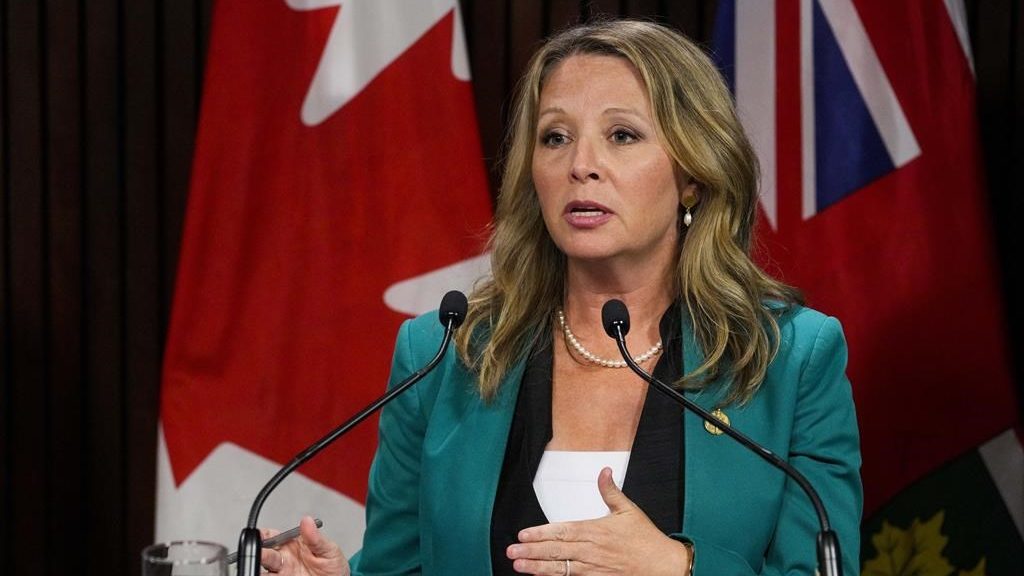Theresa Oswald goes from rising star in caucus to leader of NDP revolt
Posted Mar 5, 2015 11:22:09 AM.
This article is more than 5 years old.
WINNIPEG – Before Theresa Oswald entered politics — and long before she led a caucus revolt against her own premier — she was a teacher.
Oswald, 48, still lives in the south end of Winnipeg where she grew up in what she calls “very humble” circumstances.
“My parents didn’t graduate from high school. They couldn’t. They had to leave school and work to support their families,” she says.
“They always placed a huge value on getting a good education. That’s what they wanted for their kids.”
Oswald, the youngest of three siblings, stayed in school and got an education degree from the University of Manitoba. She started teaching high school as the 1980s turned to the 1990s — a time when governments of all stripes were cutting spending.
At Glenlawn Collegiate, the results were noticeable.
“I had 44 kids in my Grade 12 English class one year, and 49 in another one,” Oswald recalls.
“There’s only so many times you can tell kids like that, you know, ‘You get out there, Mary, and change the world’ before one of them turns around and says, ‘Well, what are you doing, Ms. Oswald’?”
After serving as vice-principal at another school, Oswald entered the political arena. In 2003, she ran — and won — in Seine River, an area that had long been a Progressive Conservative stronghold.
Oswald’s political fortunes rose quickly. A year later, she was elevated to cabinet and given the healthy living portfolio. Two years after that, she was given a promotion to health minister and managed the portfolio for seven years.
Her term was not without controversy. The 2008 death of Brian Sinclair, a double amputee who was untreated in a hospital emergency room for 34 hours, exposed serious gaps in health care.
When Gary Doer resigned as premier in 2009, Oswald was touted as a potential replacement, but she didn’t run. Her husband, Sam, was working in the United States and she had a preschool son, Jack, to raise. It was also during the H1N1 outbreak.
She was shuffled to the new portfolio of jobs and the economy in 2013, in part to defend the government’s provincial sales tax increase by promoting the construction and road repair it would fund.
Her debating skills proved handy. She fended off questions about the government’s estimate of 58,900 jobs being created — it was really 58,900 person-years of employment — by saying bureaucrats often interchange the terms jobs and person-years. “Tomato, tomahto,” she quipped at the time.
Last fall, she became the leader of a public spat over Selinger’s leadership.
Oswald and four other senior ministers suggested that Selinger consider resigning to help the NDP survive the next election, slated for 2016. The party had plummeted in opinion polls after the tax increase.
Her critics say Oswald had been waiting for a chance to seize power, but she denies it.
“I certainly wouldn’t recommend to anyone else considering a leadership run the path that I’ve taken. It’s been bumpy, and I think that that might speak to being some evidence of it not being a master Machiavellian plan.”
Oswald is now in the awkward position of distancing herself from some of the government actions that she used to vehemently defend.
She has promised new rebates for low-income earners if she becomes premier — one of several promises she has made that make her appear more left-leaning than Selinger.
Oswald says she is running because she thinks she offers the NDP the best chance of getting re-elected.
Her supporters point out that she is younger than her opponents. She would be the province’s first generation Xer and woman to hold the premier’s chair.
She realizes the revolt has caused fractures within the party that will need to be mended after Sunday’s vote. She won’t say how long she will stick around if she loses.
“I have very deliberately declined to answer that question because, honestly, that has a lot to do with what my family wants.”










